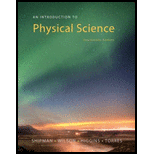
An Introduction to Physical Science
14th Edition
ISBN: 9781305079137
Author: James Shipman, Jerry D. Wilson, Charles A. Higgins, Omar Torres
Publisher: Cengage Learning
expand_more
expand_more
format_list_bulleted
Question
Chapter 9.3, Problem 9.4CE
To determine
Energy in eV of the photon absorbed when an electron jumps up from the
n = 1 n = 3
Expert Solution & Answer
Want to see the full answer?
Check out a sample textbook solution
Students have asked these similar questions
a. Is a 4p → 4s transition allowed in sodium? If so, what is its wavelength? If not, why not?b. Is a 3d → 4s transition allowed in sodium? If so, what is its wavelength? If not, why not?
Consider a hydrogen atom and a singly ionized helium atom. Which atom has the lower ground state energy? (a) Hydrogen (b) Helium (c) The ground state energy is the same for both. Why?
An electron in a hydrogen atom makes a transition from the n=1 state to the n=3 state
(1eV= 1.6 x10^-19 J and h = 6.63 x 10^-34 J s= 4.136 x 10^-15 Ev/hz c =3.0 x10^8 m/s)
what is the energy of the photon absorbed in transition and what is the frequency of the absorbed photon energy?
Chapter 9 Solutions
An Introduction to Physical Science
Ch. 9.1 - Prob. 1PQCh. 9.1 - Prob. 2PQCh. 9.2 - Prob. 1PQCh. 9.2 - Prob. 2PQCh. 9.2 - Prob. 9.1CECh. 9.3 - Prob. 1PQCh. 9.3 - When does a hydrogen atom emit or absorb radiant...Ch. 9.3 - Prob. 9.2CECh. 9.3 - Prob. 9.3CECh. 9.3 - Prob. 9.4CE
Ch. 9.4 - Prob. 1PQCh. 9.4 - Prob. 2PQCh. 9.5 - Prob. 1PQCh. 9.5 - Prob. 2PQCh. 9.6 - Prob. 1PQCh. 9.6 - Prob. 2PQCh. 9.6 - Prob. 9.5CECh. 9.7 - Prob. 1PQCh. 9.7 - Prob. 2PQCh. 9 - Prob. AMCh. 9 - Prob. BMCh. 9 - Prob. CMCh. 9 - Prob. DMCh. 9 - Prob. EMCh. 9 - Prob. FMCh. 9 - Prob. GMCh. 9 - Prob. HMCh. 9 - Prob. IMCh. 9 - Prob. JMCh. 9 - Prob. KMCh. 9 - Prob. LMCh. 9 - Prob. MMCh. 9 - Prob. NMCh. 9 - Prob. OMCh. 9 - Prob. PMCh. 9 - Prob. QMCh. 9 - Prob. 1MCCh. 9 - Prob. 2MCCh. 9 - Prob. 3MCCh. 9 - Prob. 4MCCh. 9 - Prob. 5MCCh. 9 - Prob. 6MCCh. 9 - Prob. 7MCCh. 9 - Prob. 8MCCh. 9 - Prob. 9MCCh. 9 - Prob. 10MCCh. 9 - Prob. 11MCCh. 9 - Prob. 12MCCh. 9 - Prob. 13MCCh. 9 - Prob. 14MCCh. 9 - Prob. 1FIBCh. 9 - Prob. 2FIBCh. 9 - Prob. 3FIBCh. 9 - Prob. 4FIBCh. 9 - Prob. 5FIBCh. 9 - Prob. 6FIBCh. 9 - Prob. 7FIBCh. 9 - Prob. 8FIBCh. 9 - Prob. 9FIBCh. 9 - Prob. 10FIBCh. 9 - Prob. 11FIBCh. 9 - Prob. 12FIBCh. 9 - Prob. 1SACh. 9 - Prob. 2SACh. 9 - Prob. 3SACh. 9 - Prob. 4SACh. 9 - Prob. 5SACh. 9 - Prob. 6SACh. 9 - Prob. 7SACh. 9 - Prob. 8SACh. 9 - Prob. 9SACh. 9 - Prob. 10SACh. 9 - Prob. 11SACh. 9 - Prob. 12SACh. 9 - Prob. 13SACh. 9 - Prob. 14SACh. 9 - Prob. 15SACh. 9 - Prob. 16SACh. 9 - Prob. 17SACh. 9 - Prob. 18SACh. 9 - Prob. 19SACh. 9 - Prob. 20SACh. 9 - Prob. 21SACh. 9 - Prob. 22SACh. 9 - Prob. 23SACh. 9 - Prob. 24SACh. 9 - Prob. 25SACh. 9 - Prob. 26SACh. 9 - Prob. 27SACh. 9 - Prob. 28SACh. 9 - Prob. 29SACh. 9 - Prob. 30SACh. 9 - Prob. 31SACh. 9 - Prob. 32SACh. 9 - Prob. 33SACh. 9 - Prob. 34SACh. 9 - Visualize the connection for the descriptions of...Ch. 9 - Prob. 1AYKCh. 9 - Prob. 2AYKCh. 9 - Prob. 3AYKCh. 9 - Prob. 4AYKCh. 9 - Prob. 5AYKCh. 9 - Prob. 1ECh. 9 - Prob. 2ECh. 9 - Prob. 3ECh. 9 - Prob. 4ECh. 9 - Prob. 5ECh. 9 - Prob. 6ECh. 9 - Prob. 7ECh. 9 - Prob. 8ECh. 9 - Prob. 9ECh. 9 - Prob. 10ECh. 9 - Prob. 11ECh. 9 - Prob. 12E
Knowledge Booster
Similar questions
- What is the energy of the photon that, when absorbed by a hydrogen atom, could cause an electronic transition from the n = 2 state to the n = 5 state? Answer in units of eV. What energy could cause an electronic transition from the n = 5 state to the n = 8 state? Answer in units of eV.arrow_forwardA photon with a wavelength of 410 nm has energy Ephoton = 3.0 eV. Do you expect to see a spectral line with λ = 410 nm in the emission spectrum of the atom represented by this energy-level diagram? If so, what transition or transitions will emit it? Do you expect to see a spectral line with λ = 410 nm in the absorption spectrum? If so, what transition or transitions will absorb it?arrow_forwardEnumerate all states of the hydrogen atom corresponding to the principal quantum number n = 2, giving the spectroscopic designation for each. Calculate the energies of these states.arrow_forward
- Calculate the longest wavelength of the electromagnetic radiation emitted by the hydrogen atom in undergoing a transition from the n = 6 level.arrow_forwardConsider only transitions involving the n = 1 through n = 4 energy levels for the hydrogen atom (see Figures 6.7 and 6.10). (a) How many emission lines are possible, considering only the four quantum levels? (b) Photons of the lowest enerrgy are emitted in a transition from the level with n = _ _ _ _ to a level with n = _ _ _ _ (c) The emission line having the shortest wavelength corresponds to a transition from the level with n = _ _ _ _ to the level with n =arrow_forwardA) What is the least amount of energy, in electron volts, that must be given to a hydrogen atom which is initially in its ground level so that it can emit the HαHα line in the Balmer series? Express your answer in electronvolts to three significant figures. B) How many different possibilities of spectral-line emissions are there for this atom when the electron starts in the n = 3 level and eventually ends up in the ground level?arrow_forward
- In the operation of a helium-neon laser, why is it important that the metastable state in the helium atom closely match the energy level of a more-difficult-to- come-by metastable state in neon?arrow_forwardWhat is the energy of the photon that, whenabsorbed by a hydrogen atom, could cause anelectronic transition from the n = 3 state tothe n = 5 state?Answer in units of eV. What energy could cause an electronic transition from the n = 5 state to the n = 7state?Answer in units of eV.arrow_forwardConsider photons incident on a hydrogen atom. (a) A transition from the n = 4 to the n = 7 excited-state requires the absorption of a photon of what minimum energy? eV(b) A transition from the n = 1 ground state to the n = 6 excited state requires the absorption of a photon of what minimum energy? eVarrow_forward
- Explain the reason that metal atomic chains have quantized G, different from bulk metals by comparing with the Schematic illustration of a diffusive and ballistic conductor.arrow_forwardA hydrogen atom is excited from its ground state to the state with n= 4. (a) How much energy must be absorbed by the atom? Consider the photon energies that can be emitted by the atom as it de-excites to the ground state in the several possible ways. (b) How many different energies are possible; what are the (c) highest, (d) second highest, (e) third highest, (f) lowest, (g) second lowest, and (h) third lowest energies?arrow_forwardConsider only the transitions involving the first four energy levels for a hydrogen atom:a. How many emissions are possible for an electron in the n = 4 level as it goes tothe ground state?b. Which electronic transition is the lowest energy?c. Which electronic transition corresponds to the shortest wavelength emissionarrow_forward
arrow_back_ios
SEE MORE QUESTIONS
arrow_forward_ios
Recommended textbooks for you
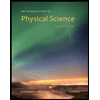 An Introduction to Physical SciencePhysicsISBN:9781305079137Author:James Shipman, Jerry D. Wilson, Charles A. Higgins, Omar TorresPublisher:Cengage Learning
An Introduction to Physical SciencePhysicsISBN:9781305079137Author:James Shipman, Jerry D. Wilson, Charles A. Higgins, Omar TorresPublisher:Cengage Learning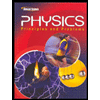 Glencoe Physics: Principles and Problems, Student...PhysicsISBN:9780078807213Author:Paul W. ZitzewitzPublisher:Glencoe/McGraw-Hill
Glencoe Physics: Principles and Problems, Student...PhysicsISBN:9780078807213Author:Paul W. ZitzewitzPublisher:Glencoe/McGraw-Hill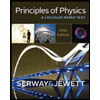 Principles of Physics: A Calculus-Based TextPhysicsISBN:9781133104261Author:Raymond A. Serway, John W. JewettPublisher:Cengage Learning
Principles of Physics: A Calculus-Based TextPhysicsISBN:9781133104261Author:Raymond A. Serway, John W. JewettPublisher:Cengage Learning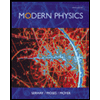 Modern PhysicsPhysicsISBN:9781111794378Author:Raymond A. Serway, Clement J. Moses, Curt A. MoyerPublisher:Cengage Learning
Modern PhysicsPhysicsISBN:9781111794378Author:Raymond A. Serway, Clement J. Moses, Curt A. MoyerPublisher:Cengage Learning

An Introduction to Physical Science
Physics
ISBN:9781305079137
Author:James Shipman, Jerry D. Wilson, Charles A. Higgins, Omar Torres
Publisher:Cengage Learning

Glencoe Physics: Principles and Problems, Student...
Physics
ISBN:9780078807213
Author:Paul W. Zitzewitz
Publisher:Glencoe/McGraw-Hill

Principles of Physics: A Calculus-Based Text
Physics
ISBN:9781133104261
Author:Raymond A. Serway, John W. Jewett
Publisher:Cengage Learning

Modern Physics
Physics
ISBN:9781111794378
Author:Raymond A. Serway, Clement J. Moses, Curt A. Moyer
Publisher:Cengage Learning